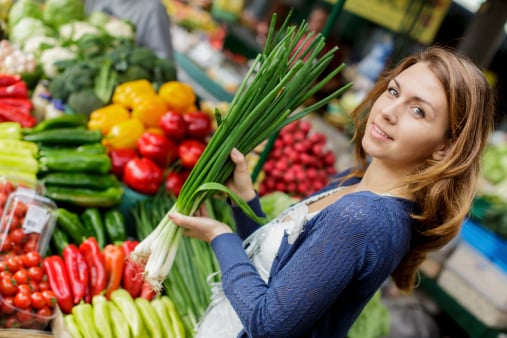Local foods offer tangible economic benefits in several regions, says a team of economists at Penn State’s College of Agricultural Sciences.
Farms that sell their produce locally often boost economic growth in their communities in various parts of the US.
Economic benefits, in this context, refers to the economy rather than an individual company. Economic benefits, in this sense, include job creation, GDP growth, and greater tax receipts for the government.
Stephan Goetz, professor of agricultural and regional economics in Penn State’s College of Agricultural Sciences, said:
“There has been a lot of hope, but little evidence, that local food systems can be an engine of economic growth in communities. Our findings show that, at least in certain regions of the country, community-focused agriculture has had a measurable effect on economic growth.”
The team’s study – “Linkages Between Community-Focused Agriculture, Farm Sales, and Regional Growth“ – has been published in the journal Economic Development Quarterly. Their findings shed light on the impact the sale of local foods can have on economies, and contain useful data for policymakers when considering supporting community-focused agriculture programs.
According to the team, community-focused agriculture includes:
- Farm businesses that sell produce directly to consumers.
- Farm businesses that generate farm income from selling produce directly to consumer, generate income from agritourism, or both. Examples of agritourism include pick-your-own, harvest festivals and other events that draw visitors to farms.
Nationally, local foods make up a small part of total farm sales
The 2007 US Census of Agriculture shows that only 6.2% of all farms are involved in direct sales, while a much lower percentage are engaged in agritourism activities.
Goetz and team gathered and analyzed data on agricultural sales overall and measured how community-focused agriculture impacts on local economic growth.
Goetz said:
“Rather than look at the direct effect of community-focused agriculture on economic growth, we looked at the effect of these operations on total agricultural sales, and then at how total agricultural sales affected economic growth.”
The economists analyzed the association between direct farm sales – sales made directly to consumer from the farmer – and total farm sales. They used county-level data from the US Census of Agriculture between 2002 and 2007 (the most recent available data).
On a national bases there was a difference between the two, but not what they considered to be a “statistical difference”.
Direct sales complement total farm sales in some regions
However, when analyzing the data region-by-region (as defined by the Bureau of Economic Analysis), direct sales did complement total farm sales significantly in some regions.
In New England, for example, a one-dollar increase from the 2002 level of direct farm sales was linked to a $5 rise in total farm sales. In states like Pennsylvania, New York, New Jersey, Maryland and Delaware that $1 increase was associated with a $9 rise in overall farm revenue.
However, in other regions local food sales were found to compete with farms’ total sales. In the counties in Southeastern US direct sales were associated with a fall in total farm sales.
The team then used a statistical model to work out how alterations in farm sales per capita affected changes in real personal income per capita – an indicator of economic growth.
Goetz said:
“We found that for every $1 increase in agricultural sales, personal income rose by 22 cents over the course of five years. Considering the relatively small size of just the farming sector within the national economy, with less than 2 percent of the workforce engaged in farming, it’s impressive that these sales actually move income growth in this way.”
By demonstrating that direct farm sales have a positive effect on total agricultural sales, which in turn boost income growth, the study shows that direct sales do indeed contribute to local economic expansion, at least in the Northeast US, Goetz explained. He added that the team was surprised with its findings.
Sale of local foods does not just recirculate existing money
Goetz commented:
“When we set out to measure the economic impact of local food sales, we frankly didn’t expect to find one.”
Economists are generally doubtful about the impact local sales can have, because they believe all they do is recirculate money that is already there, rather than inject new wealth into the area.
“Injection of new money — money from outside of the community — is what many economic development practitioners think of as the fuel for economic growth. But to me, these findings provide quite robust evidence that even direct sales do have an effect on growth, in the Northeast U.S., ” said Goetz.

